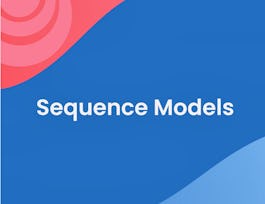Welcome to the cutting-edge course on Quantitative Model Checking for Markov Chains! As technology permeates every aspect of modern life—Embedded Systems, Cyber-Physical Systems, Communication Protocols, and Transportation Systems—the need for dependable software is at an all-time high. One tiny flaw can lead to catastrophic failures and enormous costs. That's where you come in.



Quantitative Model Checking

Instructor: Anne Remke
Sponsored by BrightStar Care
6,426 already enrolled
(52 reviews)
Skills you'll gain
Details to know

Add to your LinkedIn profile
27 assignments
See how employees at top companies are mastering in-demand skills


Earn a career certificate
Add this credential to your LinkedIn profile, resume, or CV
Share it on social media and in your performance review

There are 5 modules in this course
We introduce Labeled Transition Systems (LTS), the syntax and semantics of Computational Tree Logic (CTL) and discuss the model checking algorithms that are necessary to compute the satisfaction set for specific CTL formulas.
What's included
6 videos3 readings4 assignments
We enhance transition systems by discrete time and add probabilities to transitions to model probabilistic choices. We discuss important properties of DTMCs, such as the memoryless property and time-homogeneity. State classification can be used to determine the existence of the limiting and / or stationary distribution.
What's included
5 videos2 readings5 assignments
We discuss the syntax and semantics of Probabilistic Computational Tree logic and check out the model checking algorithms that are necessary to decide the validity of different kinds of PCTL formulas. We shortly discuss the complexity of PCTL model checking.
What's included
5 videos3 readings6 assignments
We enhance Discrete-Time Markov Chains with real time and discuss how the resulting modelling formalism evolves over time. We compute the steady-state for different kinds of CMTCs and discuss how the transient probabilities can be efficiently computed using a method called uniformisation.
What's included
5 videos2 readings6 assignments
We introduce the syntax and semantics of Continuous Stochastic Logic and describe how the different kinds of CSL formulas can be model checked. Especially, model checking the time bounded until operator requires applying the concept of uniformisation, which we have discussed in the previous module.
What's included
5 videos2 readings6 assignments
Instructor

Offered by
Why people choose Coursera for their career




Learner reviews
52 reviews
- 5 stars
57.69%
- 4 stars
25%
- 3 stars
5.76%
- 2 stars
5.76%
- 1 star
5.76%
Showing 3 of 52
Reviewed on Aug 26, 2023
It's not my specialty, just thank you
Recommended if you're interested in Computer Science

Stanford University

DeepLearning.AI

Coursera Project Network

Northeastern University

Open new doors with Coursera Plus
Unlimited access to 10,000+ world-class courses, hands-on projects, and job-ready certificate programs - all included in your subscription
Advance your career with an online degree
Earn a degree from world-class universities - 100% online
Join over 3,400 global companies that choose Coursera for Business
Upskill your employees to excel in the digital economy


